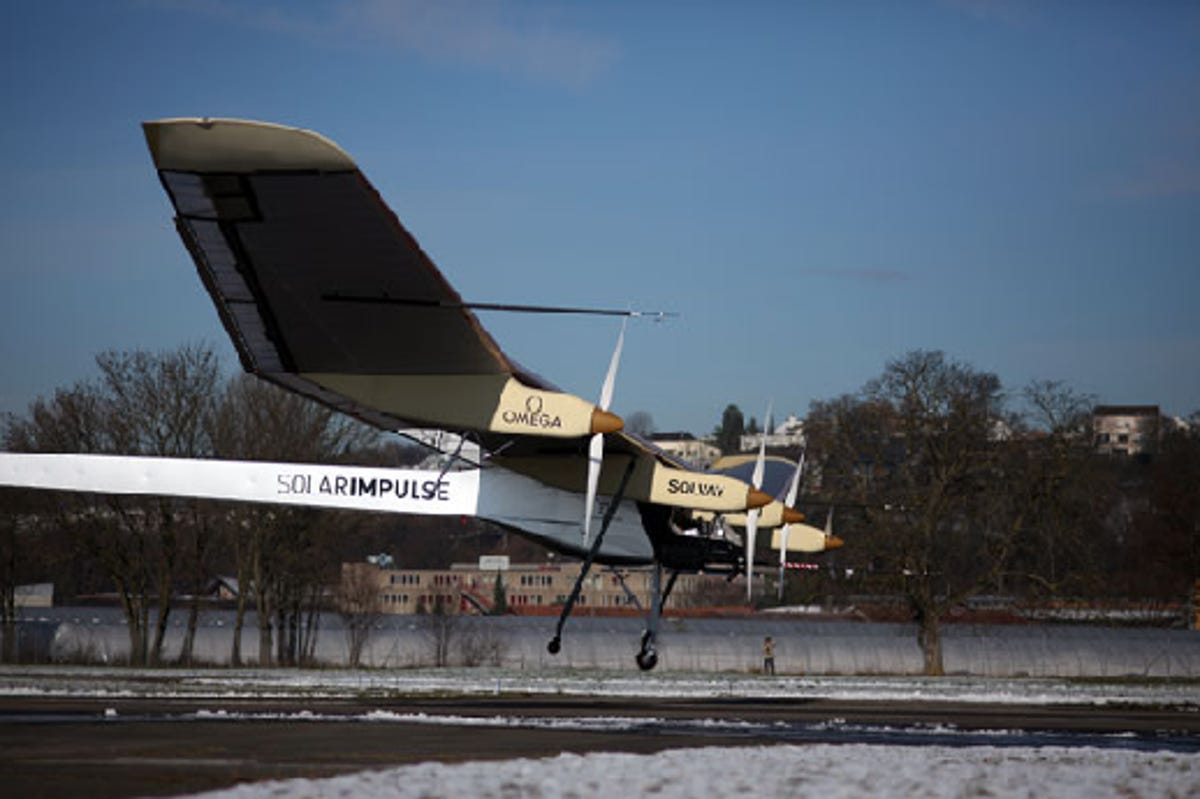Solar Impulse aircraft flies, briefly (photos)
It didn't go very high or very far this time, but the prototype is designed eventually to fly night and day, and around the world.

Solar Impulse
Four electric propellers and a bank of batteries powered the prototype craft on its test voyage, or "flea hop," as the Solar Impulse team calls it. The plane did resemble a huge insect hopping off the ground.
Pilot Markus Scherdel
A low-altitude flight
During its brief but momentous test flight, the Impulse got all of 1 meter (3.2 feet) off the ground and flew a distance of 350 meters. (By comparison, the Wright Brothers flew about 260 meters in 59 seconds in the longest flight of their first day of trying at Kitty Hawk in December 1903.)
Congratulations
"We've done it," wrote Solar Impulse co-founder Bertrand Piccard in his blog after the flight. "It actually took off! With its immense wingspan and low speed, it seemed to just hang in the air without moving for 30 seconds. But that was enough for it to fly 350 metres. The whole team held its breath while test pilot Markus Scherdel stabilised the Solar Impulse with a few tweaks of the ailerons before touching down smoothly."
Co-founders Bertrand Piccard and Andre Borschberg
"This is the culmination of six years of intense work by a very experienced team of professionals," said Borschberg. "This first 'flea hop' successfully completes the first phase of Solar Impulse, confirming our technical choices."
The Solar Impulse team
"Never before--in the whole history of aviation--has an aircraft so big, so light and consuming so little energy actually flown," wrote Piccard in his blog. "How can I thank such a magnificent team, how can I sufficiently congratulate all those engineers, who, under the supervision of Andre, have calculated, designed and built this first prototype?"
Bird's-eye view
From there, the team hopes to take longer and higher flights in 2011; then in 2012, a transatlantic trip followed by the ultimate objective--a full journey around the world.
"On the one hand I find it terrific to see a dream come true," said Piccard. "On the other hand, I remain humble in the face of the difficult journey still to be accomplished--it's a long way between these initial tests and a circumnavigation of the world."
For more photos of the Solar Impulse, see "Photos: Soaring ambition for solar aircraft."

